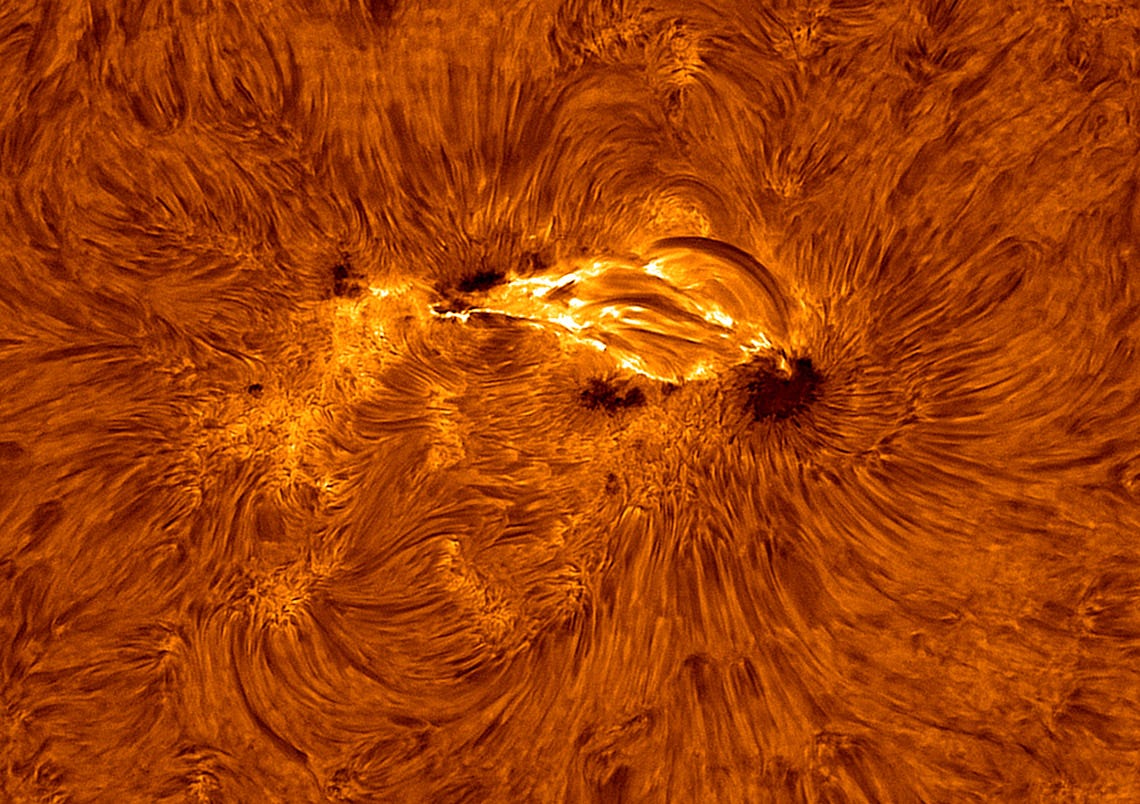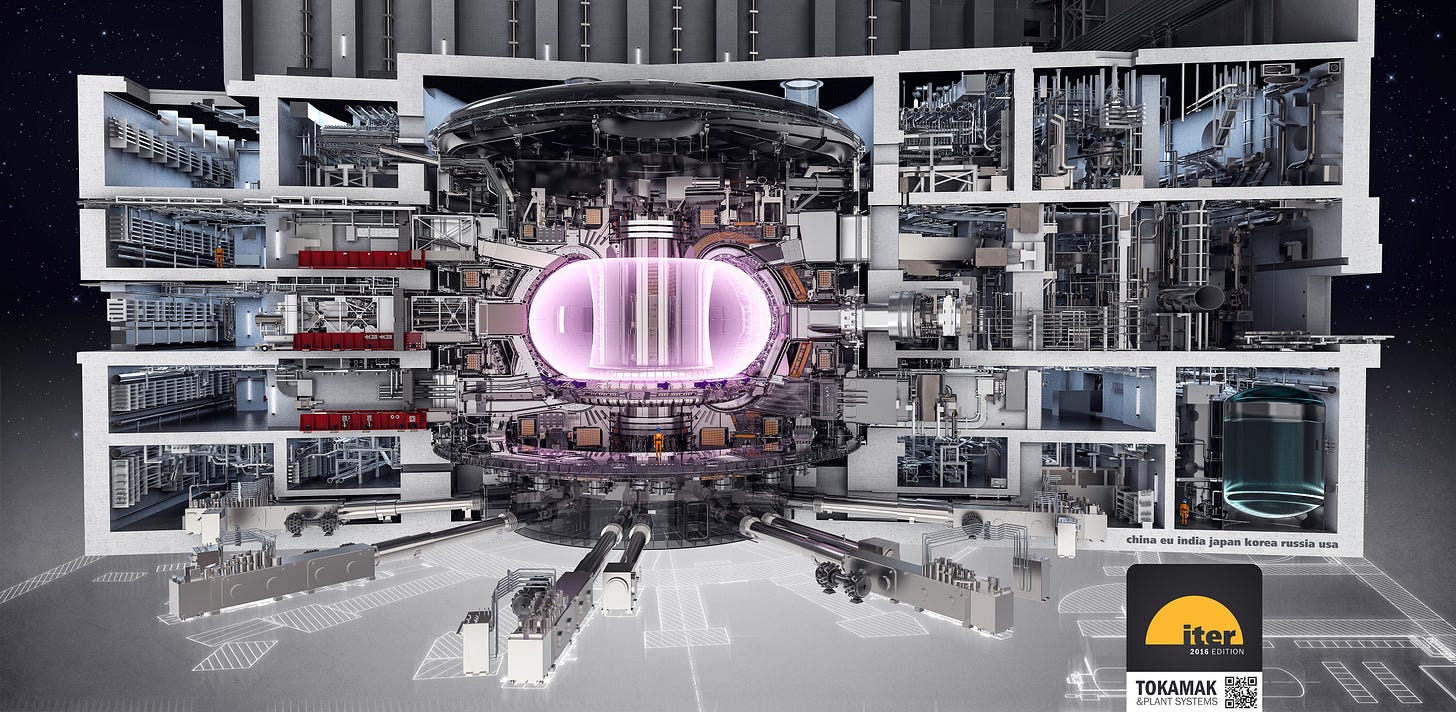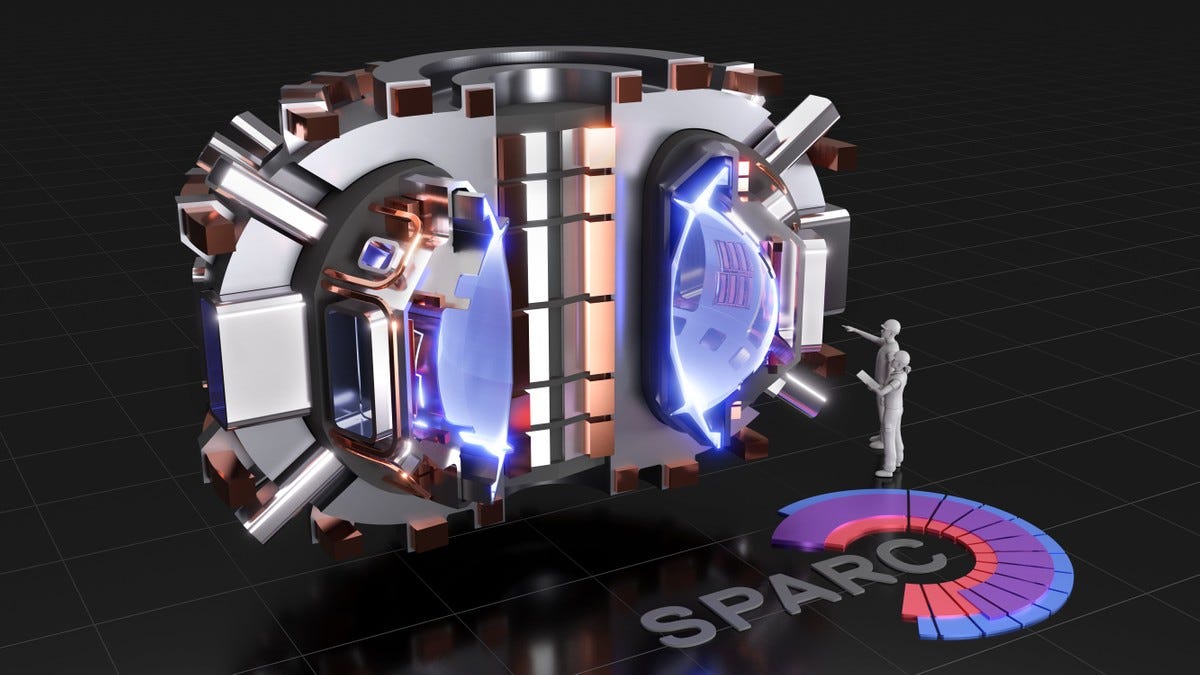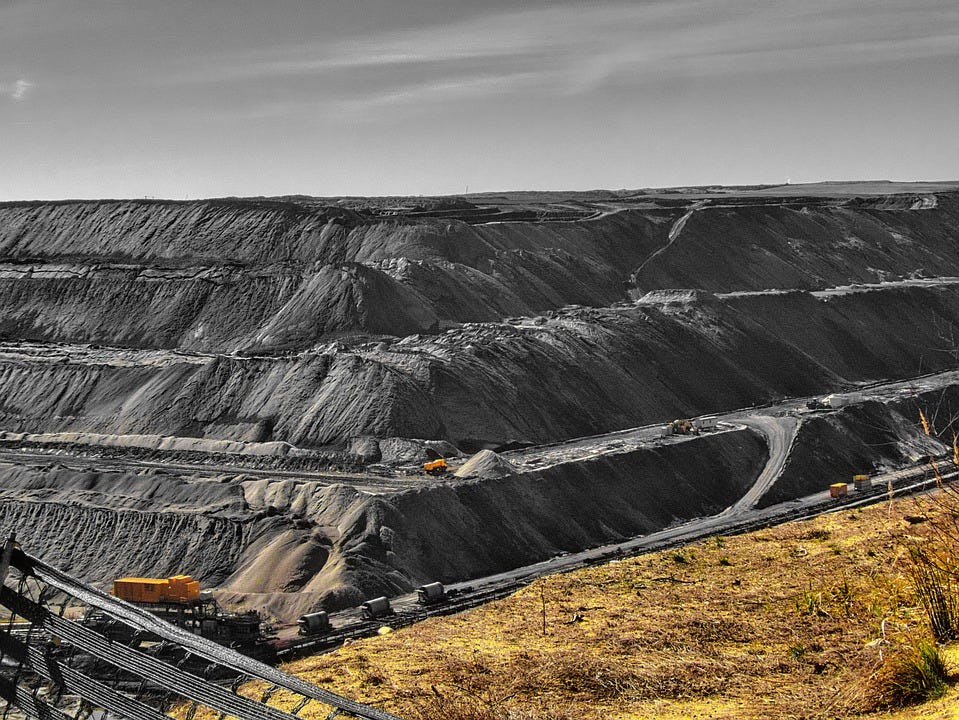Hello everyone:
Please remember to scroll past the end of the essay to read this week’s curated Anthropocene news.
Now on to this week’s essay:
As I begin this writing, we’re all shoveled out after an old-fashioned no’theaster (or “nor’easter,” if you must) that brought a day and a night of gale-driven powdery drift snow, particularly here on the coast. Some areas next to the house and barn are still bare from wind-scour, while others shoulder a few feet of the stuff. The storm felt like an entire “real” winter encapsulated in a weekend, a nostalgic snow globe to explore before we get back to the new normal of a winter with little snow and warmer temperatures. By the time you read this we’ll have had temps in the low 40s and some rain.
As a reminder, this concept of “new normal” is itself a new normal. The winters I grew up in weren’t as cold or snowy as those of my parents, and their winters were a bit balmier than those of previous generations. But the bulk of human history before the recent Anthropocene, while full of changes both seasonal and radical, was not defined by the slow, steady planetary consequence of excessive human activity.
Winter in Maine is still dark and fairly cold. The Anthropocene hasn’t altered the planet’s tilt, though I suppose Elon Musk is working on that. It’s not cold enough to kill the newly-arrived disease-ridden ticks or scare off the very-newly-arrived pandemic home buyers, but chilly nonetheless. We’ve had some beautiful skating ice on the ponds and lakes, and we’ve had some ice in the harbors, which is good to see.
I love winter, though I’ll confess to never having fully adjusted back to the darkness of a Maine winter after a decade of spending the season in Antarctica. There, in the austral polar summer, I grew accustomed to constant daylight as the context for hard cold. It was a lunar icescape lit by a sun circling overhead like a phoenix unwilling to land. All that light made winter more of a revelation than a mystery.
So for this week’s essay let’s take a brief (writing) vacation in the Sun.
Even snowflakes, after all, owe their existence to the Sun. The Sun drives life, which in turn drives much of weather and climate. Snowflakes have a more intimate connection, though. It’s not just that water in all its forms lives by the grace of a temperate Earth within the Sun's Goldilocks zone, neither too hot nor too cold. It’s that each flake needs a tiny object (an ice nucleator) on which to build its unique icy frame. Dust will do, soot will do, even fungal spores will do, but microbes are more common. (Which is why some ski resorts add microbes or their relevant proteins to the water used for snow-making.) This is true for rain as well. All that precipitation isn’t merely good for life; it is life.
Why we stopped worshiping the Sun I cannot fathom. Certainly we shouldn’t claim that science got in the way. The more science reveals about the furious workings of the star we orbit, about its primal creative energy that drives all life, and about the incredibly improbable and narrow circumstance that led to the green profusion that we call Earth, the more often we should be on our knees in awe and gratitude.
Our awe, our science, and the proud cognition that drives both are only odd features of a mere twig (that’s us) in the tree of life on a planet that along with everything else orbiting the Sun make up only 0.14% of the mass in the solar system. The other 99.86% is a burning mass of hydrogen and helium. The Sun is the star.

Which is why, this week, I want to check in on the dream of fusion power, which is after all a dream of bringing the Sun’s magic down here among us. The fusion dream is an Anthropocene parable, a story of hubris (trying to harness the Sun’s energy), humility (knowing we must conjure up something more sustainable and responsible than fossil fuels), and technical wizardry far smarter than the civilization it will serve.
The basic premise of fusion is that by fusing hydrogen atoms to make helium, heat from the reaction will provide energy. The promise of fusion is that, if mastered, it will provide endless energy with none of the downsides of today’s energy options:
… if scientists can figure out a way to reliably produce and sustain nuclear fusion on Earth using elements commonly found in ocean water, virtually unlimited energy could be available at the push of a button — all without the risk of harmful carbon emissions from burning fossil fuels, the variability of wind and solar power, and the potential of meltdowns and radioactive waste from nuclear fission. (from The Pulse/WHYY)
The challenge of fusion is its impossibility… It has so far been a technological tale that echoes the Greek myth of Tantalus, punished by the gods (for stealing ambrosia and nectar) to eternally have luscious fruit and cool water just out of reach. For decades, success has always been mere decades away. Even now, as hundreds of billions of dollars are being invested by numerous governments around the world – what will soon be trillions of dollars – and with optimistic private investments reaching nearly 2 billion dollars, the best estimate is that commercially viable fusion power might begin to arrive by the 2040s or 2050s.
Why is it so difficult? Because we’re trying to create, control, and maintain an artificial star. A fusion reactor must initiate a reaction several times hotter than the 27 million degree (Fahrenheit) core of the Sun. At those temperatures hydrogen atoms can fuse and the solar version of the fourth state of matter – plasma – takes over, creating enormous amounts of heat which can be converted to electricity. But the wild turbulence of fusion plasma must be kept under intense pressure, contained by powerful and complex electromagnetic fields. (Gravity creates the pressure in a star’s core.) And all this must be done so that the energy given off by the reactor far surpasses all the energy required to create the fusion reaction.
A recent breakthrough at a Chinese experimental tokamak (the classic donut-shaped fusion reactor design) has set the new record for contained plasma: 17 minutes. Lessons learned there and at numerous experiments around the world will all be in play at the International Thermonuclear Experimental Reactor (ITER) currently being built in Marseille, France. It’s a truly international effort, with 35 nations collaborating, including all E.U. nations plus the U.S., U.K., India, China, and others. ITER is due to produce power in 2035, utilizing an electromagnetic containment field 280,000 times stronger than the magnetic field around the Earth. As a great explainer article about fusion at Vox points out, ITER’s electromagnet “can generate a magnetic force strong enough to hoist an aircraft carrier 6 feet out of the water.”
ITER has been promising that it will deliver ten times the energy required to create its plasma. But as this article in The Pulse points out, that promise has been quite misleading. It’s an engineering estimate of the tokamak’s internal energy budget, not a comparison of input and output. If ITER is successful, it will actually produce about as much power as it puts in. That would be a huge engineering success, but not a societal one. Not yet, anyway.
Meanwhile, numerous other fusion projects are underway or planned. Here in the U.S., the National Ignition Facility (NIF) at Lawrence Livermore National Laboratory uses powerful lasers to ignite atoms of a hydrogen isotope. MIT researchers, meanwhile, have used new powerful magnet technology to design a scaled-down tokamak reactor (SPARC) that they say can come online as soon as 2025. Commonwealth Fusion Systems, the company spun off from MIT to accomplish this, says it is “dedicated to the mission of delivering clean, limitless fusion power to the world.”
So let’s imagine our civilization powered by fusion reactors, small and large. What would fusion fix, what wouldn’t it fix, and what would it enable? The promise of fusion is extraordinary – world-changing, really – but there are risks as well.
The current wisdom for reining in our push past climate-related planetary boundaries calls for the electrification of everything and the near-elimination of fossil fuels. (This wisdom would be wiser if it accompanied a civilizational shift toward degrowth in wealthy nations’ consumption and population, but I’ll leave that for another day.) This means replacing carbon-rich energy production with sustainable sources like solar, wind, and fusion. (I’ll leave hydro power out of this because, as I’ve written before, it’s complicated.) It also means, here in the U.S., a tripling in size of our current grid while also making it more resilient and sophisticated.
All of these replacements for fossil-fueled energy would largely eliminate greenhouse gas emissions from the energy sector, but would require a growth in the grid that would erase wide swathes of natural habitat for transmission lines and new sites for wind and solar. We can see this already in the new solar arrays being placed in forests clear-cut for the purpose. (There are three in my little Maine town.) Since I was a young man I’ve dreamed I might live to see a day when the planet wasn’t crisscrossed with power lines, but it seems we’ll need to double down on them instead.
For solar and wind there’s also the massive expansion of mining for metals and other rare earth materials necessary for battery technology, whether to power cars, homes, or cities. Battery tech may yet evolve to require less mining, but fusion has the advantage of simply replacing fossil-fueled generators without the need for innovative mining-intensive energy storage. And that’s on top of closing down many of the coal mines, shale oil fields, and oil drilling platforms, etc. Perhaps one of fusion’s greatest promises, then, is a massive reduction in mining around the world.
A fusion-powered world would likely maintain the centralized energy structure we have now, with these large, slow-witted companies that maintain and monopolize the energy sector. Solar is headed that way at the moment, to an extent, but at least it’s a technology that has the option of allowing for microgrids and individual self-sufficiency. I don't think anyone is imagining private fusion reactors in the home in any rational analysis of the future.
(Personally, I think that kind of energy technology, one that affordably provided for a family’s or business’ 24-hour needs without being yoked to a grid, would be a far greater advance than grid-plugged fusion. Not to sound like a prepper, but the larger and more complex a grid, and the more dependent on it we become, the bigger the problem when it crashes. We already live thoroughly electric lives, both real and virtual, and few of us are prepared for either of these lives to be unplugged.)
Fusion power can be ramped up to meet increasing demand without increasing dangerous waste or emissions. And, without serious degrowth in wealthy nations and controlled growth in developing ones, demand will be increasing rapidly. Nearly a billion people, mostly in sub-Saharan Africa, still live without electricity, and for many more access to power is rare or intermittent. Affordable and unlimited fusion power, if equitably distributed, would bring fundamental change to much of the world.
Fusion requires little in the way of fuel (other than some seawater), produces no especially dangerous radioactive material, and so would provide a permanent disconnect between nuclear power and nuclear weapons: no uranium, no plutonium. Eventually, fusion reactors would replace the aging fission reactors that have created nightmares for the communities that surround them and for the governments struggling to store nuclear waste for millennia to come. The remarkable safety of fusion reactors is due to a few things: a) if a fusion reaction goes wrong, it fizzles rather than explodes; b) the “waste” product is helium; and c) radiation levels are low, with the lifespan of that radioactivity measured in decades rather than millennia. Even in a worst-case catastrophe scenario, according to ITER, a fusion reactor’s neighbors wouldn’t have to evacuate.
Hypothetically, then, fusion power can fix the supply side of the Anthropocene energy mess, assuming that affordable access to the technology was distributed equitably throughout the world. We would no longer be pumping out CO2 and methane like a supervolcano. Energy costs, once construction and maintenance were accounted for, might plummet. If transportation and industry were fully plugged into the grid, if other gas- and oil-dependent technologies were phased out, and if subsidies for the fossil fuel industry were eliminated so that these now-dominant companies could no longer compete, then civilization would be on a good path.
To a point. Fusion doesn’t fix the demand side of the equation. Fusion doesn’t help with overconsumption and overpopulation, and might worsen both, given that a) wealthy nations which have the greatest impact on extinction rates and destruction of landscapes will be the first and primary users of the technology, and b) that our usual response to cheap, abundant energy is to create more humans and more stuff. Fusion risks becoming a permission slip for further, faster destruction of biodiversity.
Which means that fusion is a mixed bag in terms of protecting life on Earth. Dialing back greenhouse gases, securing a largely emissions-free energy sector, and reducing mining would be enormously important for every ecosystem from alpine zones to rainforests to ocean depths, but a civilization set free to use as much energy as it wants is a civilization that, if unchecked by a reduction in population and other ethical improvements, is still an existential threat to life.
And none of this happy, fusion-to-the-rescue stuff will happen at a useful scale until much of the 21st century has elapsed, taking with it coral reefs, Arctic ice and permafrost, a recognizable climate, and a hefty percentage of the Earth’s terrestrial and marine species. So we’d better create a host of interim solutions along the way.
A couple of side notes: First, I wonder if fusion would eventually make solar arrays and wind turbines obsolete, or at least revert them back to a niche product for off-grid living. There’s no need for solar or wind or hydro in a reliable fusion-powered grid. Second, oil and gas production in a fusion world would still have large markets for the out-of-control production of plastics and fertilizer that are currently warping the natural world and that are likely to dramatically increase. We need revolutions in both of those sectors to finally put petrochemical companies in the ground for good.
Finally, then, is fusion a good idea? Should we be spending trillions chasing the dream of bringing the Sun here to Earth? Should we risk unleashing an endless energy source as a follow-up to unleashing millions of years of fossil carbon? I’m afraid we should, as long as the researchers and engineers are right about their ability to make it work. Given the broad range of companies and nations intensifying the push to finally take fusion technology over the finish line, I think the consensus is solid. And if that’s the case, we should be spending a hell of a lot more money than we are. As the Vox article points out, governments are funding fusion merely as an experiment rather than an astonishing solution to much of what ails civilization.
In the United States, funding for fusion research has been erratic over the years and far below the levels government analysts say is needed to make the technology a reality. The US Department of Energy currently spends about $500 million on fusion per year, compared to almost $1 billion on fossil fuel energy and $2.7 billion on renewables. Investment in fusion seems even tinier next to other major programs like NASA ($23 billion) or the military ($700 billion).
On its own, fusion certainly isn’t enough to reverse the bulk of the Anthropocene’s ills. And we have to admit that it could make things worse. But if combined with, say, some earnest effort at degrowth, something like the Half-Earth Project to protect habitats across the globe, large-scale de-acidification projects for the oceans and CO2-absorption technologies for the atmosphere, strict regulatory guardrails for chemical and plastics industries, agricultural practices that support life rather than diminish it, and civilization-wide access to education and family planning, then we’d be moving in the right direction for all life.
Fusion energy can be an accelerant for improving the fate of both the planet and humans. Where there is reliable access to energy there is access to health care, economic growth, and social stability. And any society that’s stable, healthy, and educated is more able to act in support of the rest of life, if it’s willing to do so.
Circling back now, we should remember that even coal and oil, like snowflakes, have been derived from the Sun. All that carbon-based life, that once-upon-a-time complex green growth that fed off the Sun in earlier eons, was pooled within the planet’s crust until over mere decades we extracted it to burn and release its load of carbon like a drunk determined to rearrange the biological furniture. The Sun provides nearly everything in this splendid diversity of life and landscape we call home. It will keep energizing this planet for the next five billion years, regardless of the quality of our decisions and our impacts on life. Whatever we do to shape life on Earth, it will persist and evolve amidst that constant flow of energy.
Thanks for sticking with me.
In curated Anthropocene news:
A conservation/rewilding success story: A great photoessay from High Country News on the ecological recovery of California’s Channel Islands.
Rescuing an unloved bird from extinction: A lovely short film about one woman rallying a village in India to protect a remnant population of storks.
Tesla trying to make electric cars as green as their reputation: A deep dive from the Times on Tesla taking control of a troubled nickel mine on the island of New Caledonia.
Sorry, but your gas stove is a serious polluter and a threat to health at home: Yet another article, this one from SciTechDaily, in the parade of information finally coming out about the problems with gas stoves.
Synthetic palm oil might save the rainforests: This is a long shot, probably, but something has to be done to reduce the destruction of rainforests for palm oil monoculture. Another excellent article from Yale e360.











Hi Jason - suggested reading from New Yorker magazine.
I read Kim Stanley Robinson's science fiction trilogy on terra-forming mars a short while ago. This profile explores his semi-optimistic/realistic view of the future in his novels, and his fictional depiction in this novels of our approach to solving the climate disaster. Very interesting.
https://www.newyorker.com/magazine/2022/01/31/can-science-fiction-wake-us-up-to-our-climate-reality-kim-stanley-robinson
This is one of my favorite articles you've written. Very informative. Thank you!